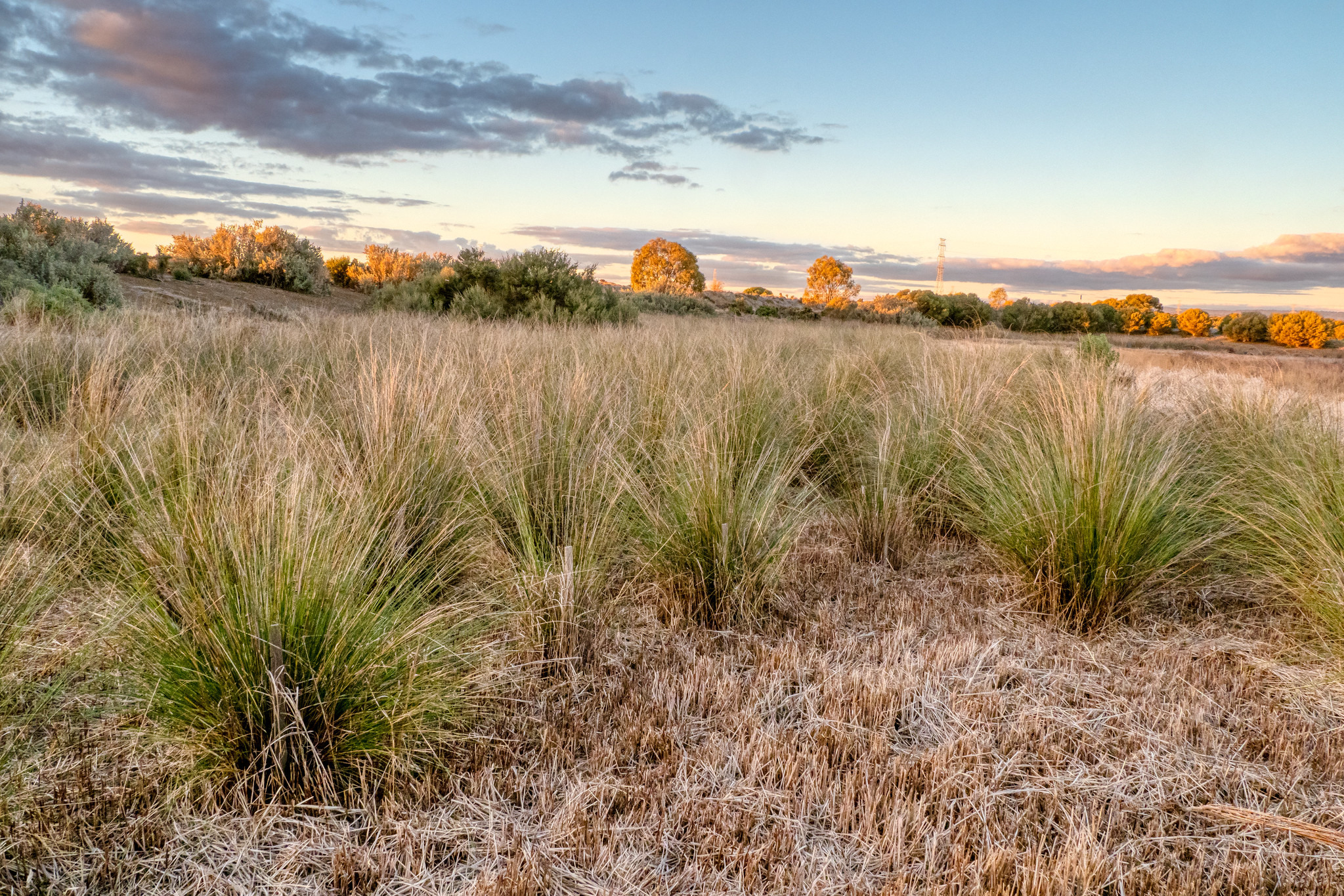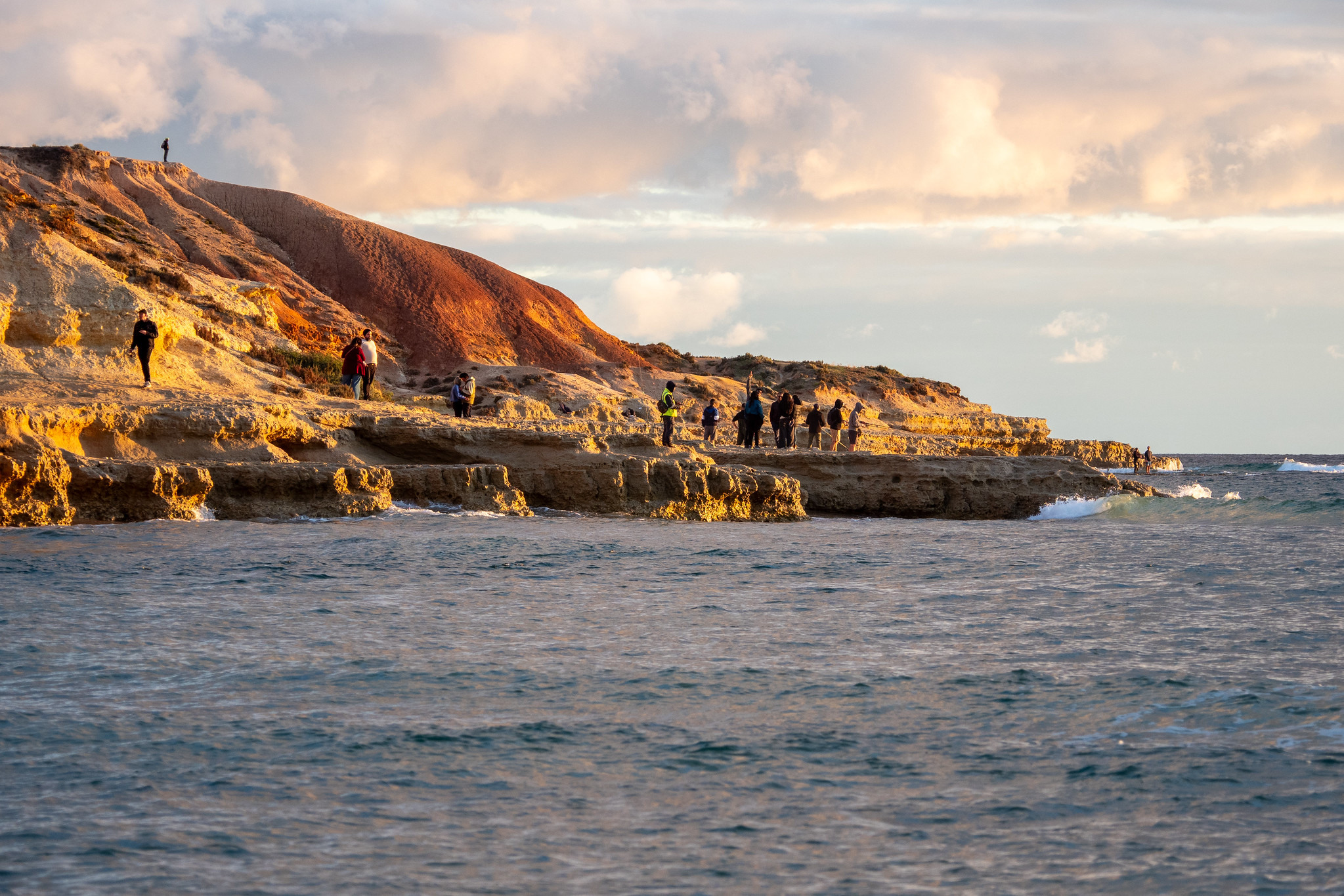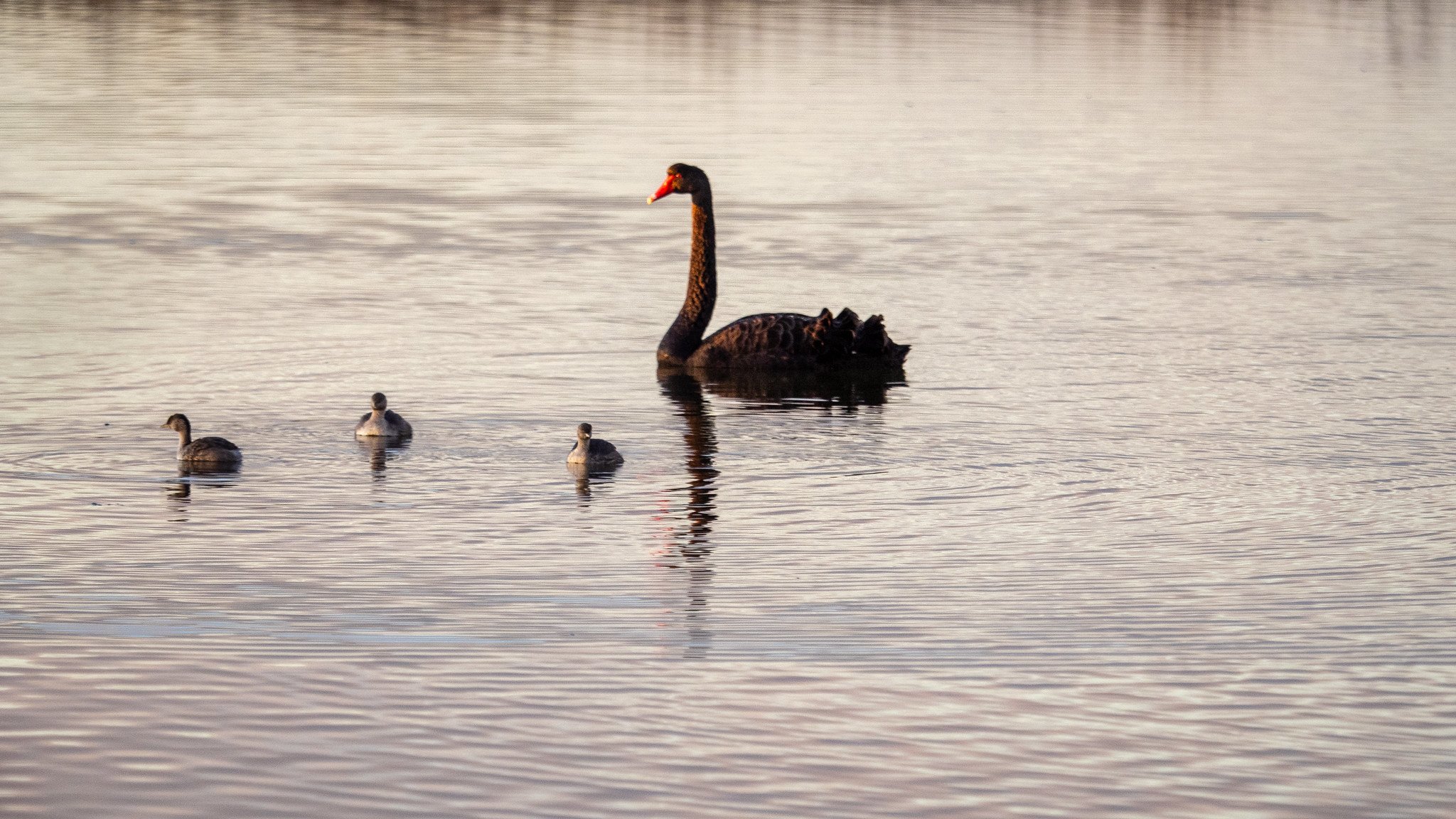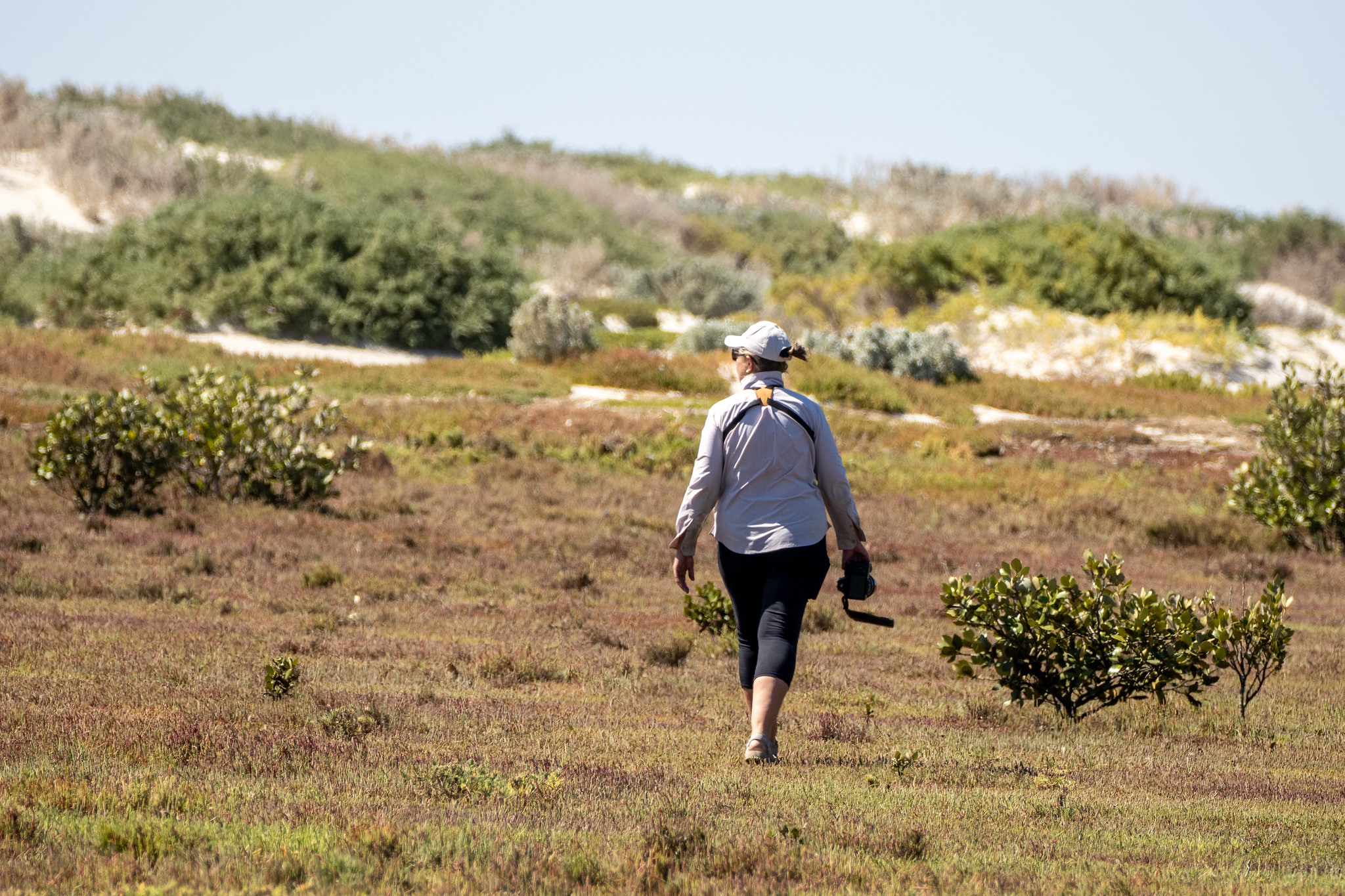Coast action
Metropolitan Adelaide’s coastline includes a wide range of coastal habitats, including dunes, cliffs, estuaries, saltmarsh and islands.
We’re committed to conserving these special habitats, with a focus on managing the coastline, controlling pest plants and animals, and ensuring fauna, flora and ecosystem health.
We do this by:
- carrying out on-ground works
- working with landholders and the community
- implementing coastal action plans
- undertaking regular monitoring.
Find out more about each of these areas, below.
On-ground works
We work alongside public landholders, like local councils and national parks, as well as volunteer groups and the community on a range of on-ground projects to conserve our coastline.
These include:
- fencing and erosion control to protect high conservation coastal dune, cliff and saltmarsh habitats.
- priority woody and herbaceous weed control.
- propagation and planting of local native coastal plants.
- Targeted pest animal control (for rabbits and foxes).
We also have a range of sites that we prioritise with our on-ground efforts, including:
- the Adelaide International Bird Sanctuary – Winaityinaityi Pangkara
- Bird Island (Section Bank)
- Biodiversity Park
- Cape Jervis
- Marino Conservation Park
- Onkaparinga Estuary
- Aldinga Conservation Park.

Partnerships
We work with relevant land managers, community groups and organisations to create a shared vision for a healthy coastline.
This includes everything from sharing advice and resources, working together to create shared site management plans, co-investing in on-ground works with targeted revegetation, and pest plant and animal control to ensure the best environment outcomes for our coasts.

Coastal action plans
Coastal action plans help us understand the condition of specific sections of our coastline, the habitats and species that it supports, and the threats that it might face.
These plans contain local information, conservation priorities and risks, as well as detailed plant and animal lists. They also outline priority actions and identify who is responsible for delivering them.
At Green Adelaide, we’re guided by the Metropolitan Adelaide and Northern Coastal Action Plan (MANCAP), which covers the coast from Sellicks Beach to the Port Wakefield Proof Range, including the Adelaide International Bird Sanctuary.
This plan was created to identify high priority sites and detail the conservation, protection and maintenance required to improve Adelaide’s coast.
An updated plan is now in development – the 2025 MANCAP. It is a collaborative report that details recent achievements and updates, identifies threats and conservation opportunities, and provides a framework to create positive change along our coastline.
We also work closely with our neighbours at Landscapes Hills and Fleurieu, in line with the recommendations in the Southern Fleurieu Conservation Action Plan.
For high priority sites where detailed site-specific actions are required, we also develop Local Biodiversity Action Plans to assist in the prioritisation and delivery of work.
These actions are undertaken in collaboration with land managers and community groups.

- Aldinga Beach BAP 2025
- Biodiversity Park BAP 2025
- Marino Conservation Park BAP 2021
- Ochre Point BAP 2022
- Tingira Reserve BAP 2025
- Torrens Island BAP
Monitoring
We undertake habitat monitoring at a number of sites across Adelaide’s metropolitan coastline so we can best understand current priorities and adapt our land management practices as our understanding improves.
Sites are monitored using Bushland Condition Assessment methodology, which provides information on habitat condition, vegetation condition, native plant species, diversity, conservation value and weeds.
Regularly monitoring ensures that we identify new and emerging risks, and is key to improving how we manage sites to both maintain and improve coastal habitats within Green Adelaide.

Some of these reports include:
- Aldinga Scrub Condition Assessment 2024
- Aldinga Washpool Condition Change 2022
- Bird Island Condition Change 2022
- Coastal Vegetations Structure Rapid Assessment 2024
- Hallett Cove Vegetation Assessment 2021
- Port Stanvac Vegetation Mapping 2023
- Tennyson Condition Change 2014-2020
- Tennyson Condition Change 2023